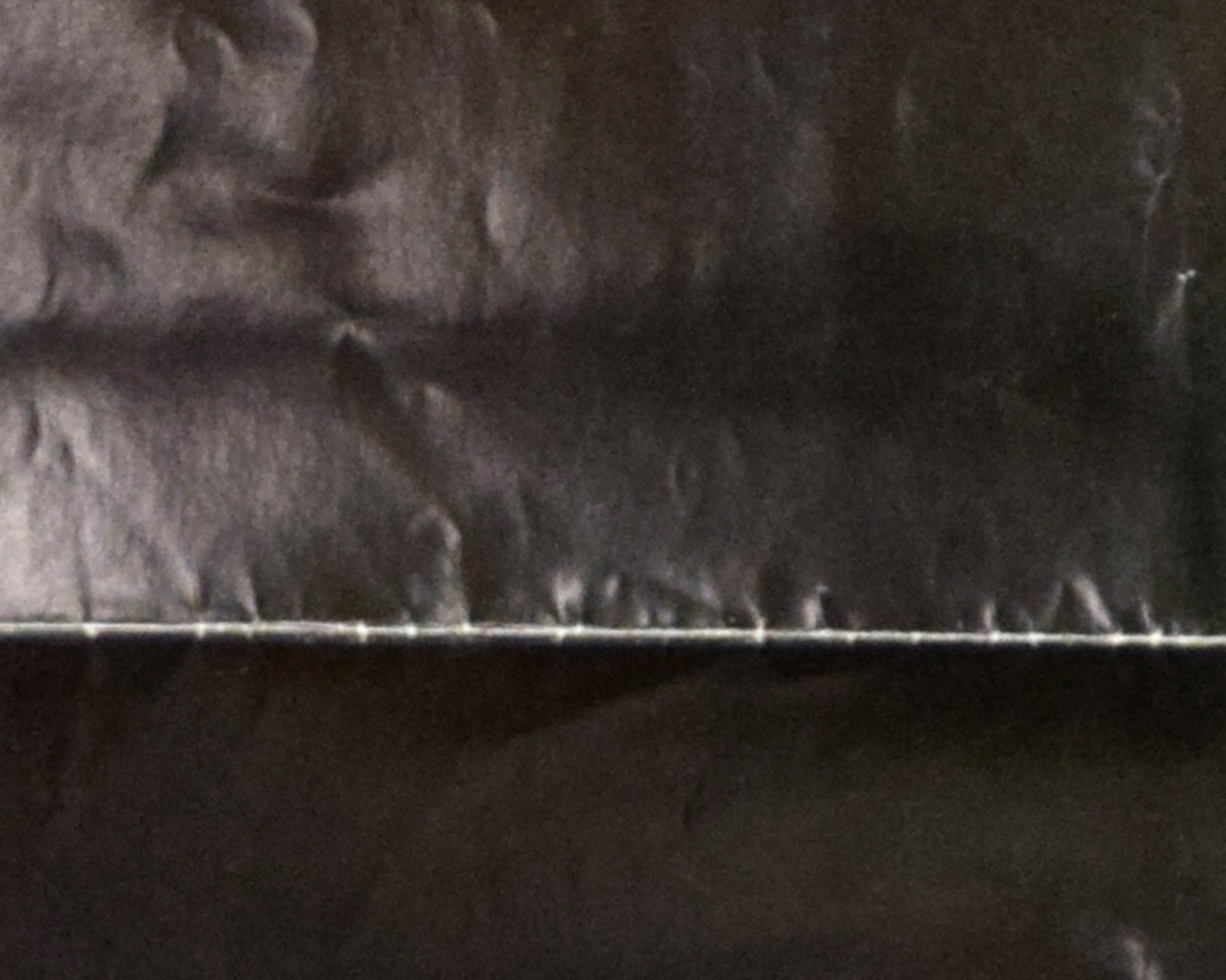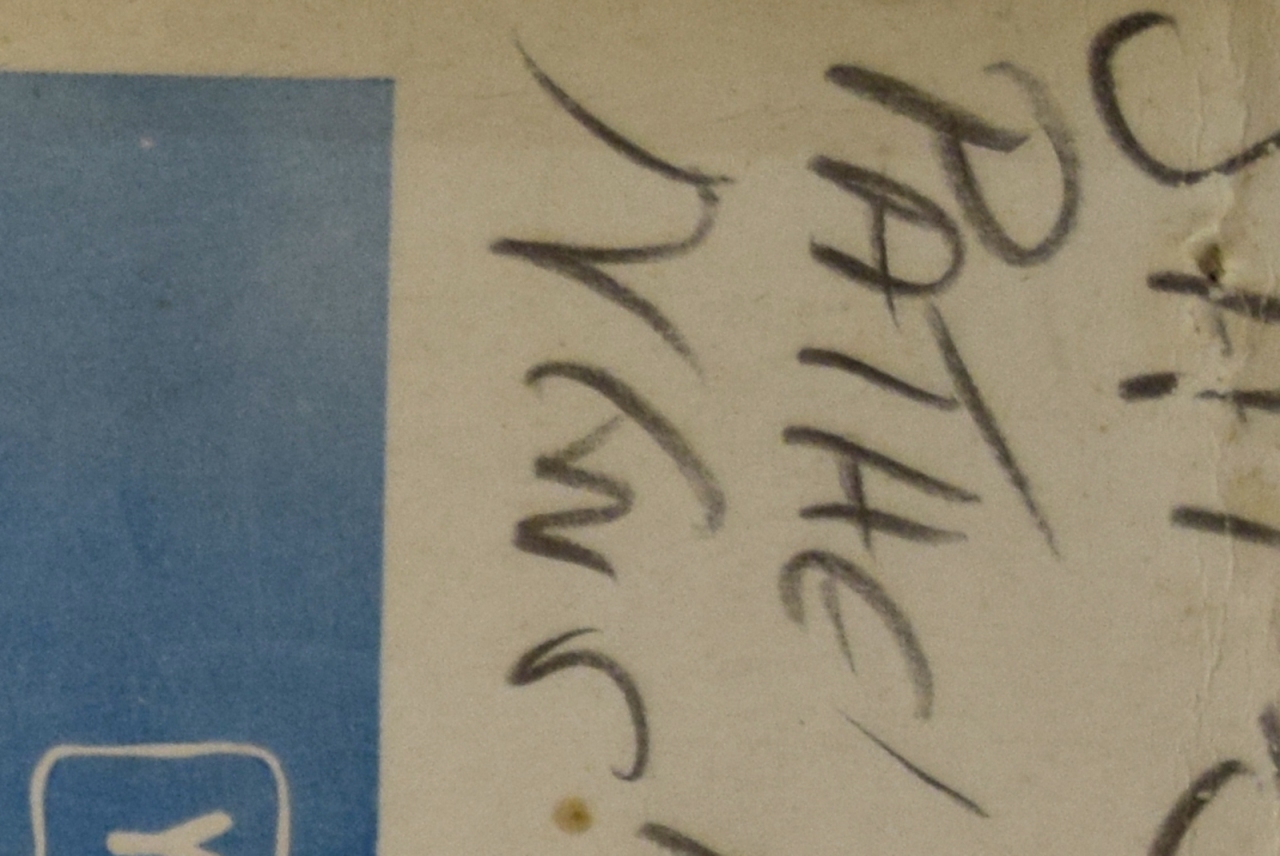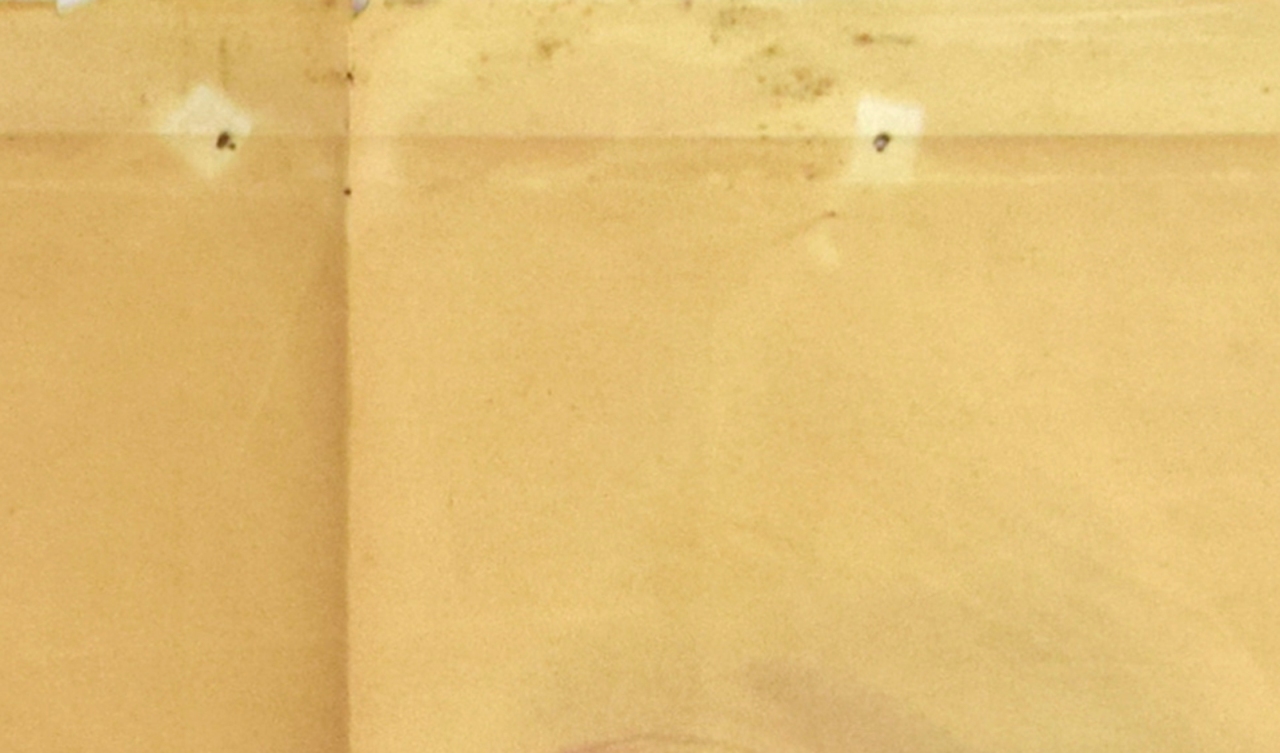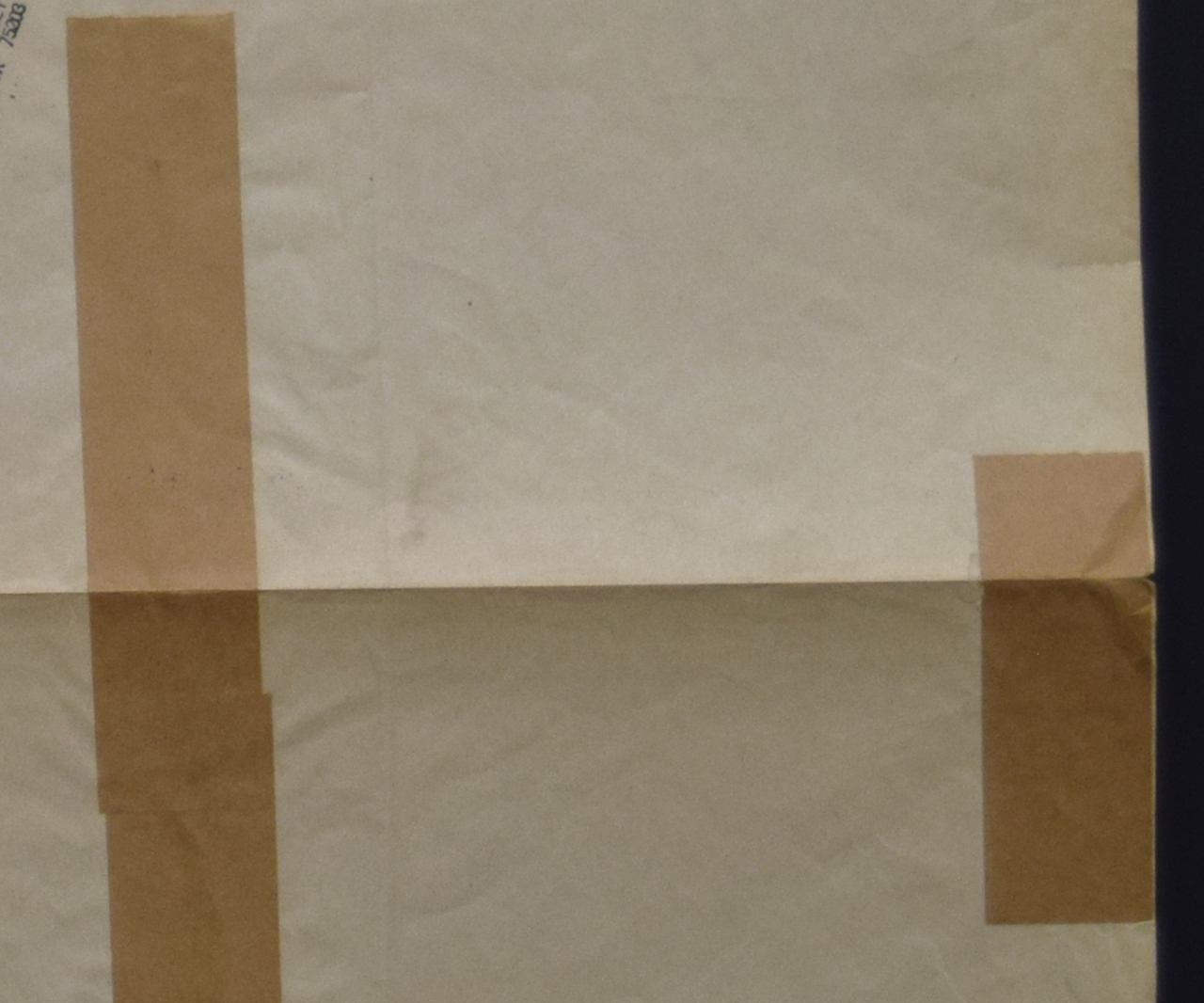For the most part, the restoration of movie posters is handled no differently than that of any poster. I say for the most part because most posters in the 20th century were printed on paper using lithography, but of course some posters were printed on thick card. Some posters were printed using silkscreen. Some were even printed using woodblock or linoleum. Some posters were hand-painted. Some posters were printed on nice paper with a high cellulose content, but other posters were printed on less expensive wood pulp paper. There are many, many unusual movie posters, and non-movie posters.
Another consideration is the life the poster has led up to now. Has it been sitting in a frame with UV glass or plexiglass? Has it been rolled up in an attic in the dark? Has it been subjected to water damage or smoke, or cigarette smoke? Has the water damage caused mold or mildew? Has the paper been attacked by silverfish? Has the poster been mounted to a piece of cardboard with a high acid content? Or has it been mounted to chipboard with rabbit glue? The variables are not infinite, but close.
Some common issues in movie poster restoration:

Bug Damage: Certain insects love the taste of paper. They can get into anything, including frames. The only way to fix the appearance of bug damage is through linen backing and restoration to the holes.

Common Dirt: Dirt can be identified by its greyishness. You should be able to remove some of it with a clean rag or your finger. Fourth Cone Restoration has some very simple and gentle solutions for removing dirt, and the results can be transformative.

Edge Wear: The edges of posters are particularly prone to brittleness and damage. Here you can see that a lot of what appears to be missing paper is actually just folded over, but pieces that have been folded for years will often break when folded back. This is another instance when the only cosmetic fix is linen backing and restoration.

Foxing on Folds: Wherever there is an irregularity in paper, foxing can often be found. The brown staining along this fold line may have been caused by the fold’s exposure to a greater humidity level than the rest of the paper. The humidity then caused oxidization of the metal content in the paper, turning it reddish brown, like Reynard the Fox for whom foxing was named. In most cases foxing can be helped by a mild bleaching process, though the level of success depends on the type of paper.

Fold Line, glossy poster: The restoration of glossy posters is notoriously problematic. The surface of the paper can be so slick that it will not easily take or hold restoration. In addition, linen backing can be tricky because of the paper’s lack of breathability. Fourth Cone Restoration has evolved some unique skills to get around these problems.

Graffiti: Posters were never meant to last. Many were printed with large margins at the top or bottom specifically so that the theater could write in their own pertinent information. Often a poster’s previous owner felt compelled to add his or her own artistic embellishments to the existing artwork. The level of difficulty in removing graffiti depends completely on the medium. Pencil is of course easy to remove. Wax crayon, as above, can require more elbow grease. Sharpie marker often penetrates deep into the paper and can require aggressive restoration.

Mildew: This can be caused by a high-humidity climate, or when the poster’s paper gets wet. Mildew takes root in wet paper very quickly and it is always destructive. It eats the paper’s sizing, the agent that acts as the glue that holds the paper’s fibers together. Once the sizing is gone, nothing is left but the paper’s dust-like fibers and the printing ink. Mildew excretes a multicolored pattern on paper, often in shades of pink, blue, and black.

Mold: Mildew’s big brother. Mold often looks worse than it is. Sometimes it can just be brushed off the surface of the paper. Sometimes it destroys the paper completely. It all goes back to keeping your poster dry.

Oil Stains: These are often yellow, and almost always circular. They can be difficult if not impossible to remove. Cosmetic restoration is the easiest way to mask their appearance.

Previous Restoration: This is not always easy to identify. If a poster has spent a lot of time in the sun, the restoration can be affected differently than the rest of the poster. If the poster has been handled repeatedly over time, this can result in the restoration wearing off. Since restoration is not done using the same material as in the poster’s original printing, it’s only natural that it will age differently. Fourth Cone Restoration can re-restore and repair old restoration, but the success depends on the quality and the extent of the previous work.

Reverse Tape Stains: This can happen when the poster’s paper has a high acid content. The acid browns the paper at a steady rate over time. Certain types of tape can be buffered, which means they have a base added to the adhesive. The base serves to neutralize or slow the progression of the acid in the paper, which means that a white discoloration appears where the tape had been. This phenomenon also happens in matting, whereby a frame’s mat has a higher or lower acid content than the artwork

Rust: This can happen when paper comes into contact with metal. This particular piece had thin metal rods clamped to its top and bottom edges , so when the poster was rolled, the bars were resting against the paper. Rust can be removed with a combination of scraping and a mild bleach treatment. Extreme cases may need cosmetic restoration.

Raw Sewage: If this has happened to your poster, you are not alone. Just do your best to get it clean of any debris, and then get it dry as quickly as possible. The poster pictured above was salvageable only because the owner managed to get it dry before mildew set in. Sewage is really just another form of moisture.

Scotch Tape: Beware scotch tape. It does not actually repair paper. It stains it deep brown, and deteriorates it over time. If scotch tape is left to have its way with paper, it will turn it into something that is not paper. Scotch tape is just awful. Never, never use scotch tape.

Smoke Damage: This refers to smoke from a fire as opposed to cigarette smoke. Smoke damage is very similar in appearance to water staining. It has a slightly more three-dimensional look to it. Smoke damage tends to turn paper very brittle, and great care needs to be taken when treating the piece to avoid further damage. Bleaching treatments tend not to work, and heavy restoration is often required.

Smudges: Not as easily removable as plain dirt, but still a relatively simple fix. Smudges are usually confined to the top layer of the paper, as opposed to stains.

Water Stains: When water stains are not accompanied by mildew, they can often be removed with a simple paper-safe bleach bath. Heavier water stains, or older water stains often require cosmetic restoration if a perfectly clean appearance is desired.

Water Soluble Tape: This is as opposed to scotch tape or cello-tape, which is awful and leaves a deep brown stain on paper. Water-soluble tape is often opaque brown or white, and can easily be removed with a water-based treatment.
Excellent and very informative blog post . Thanks a million 👍👍👍